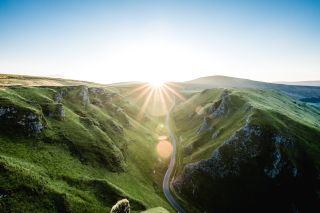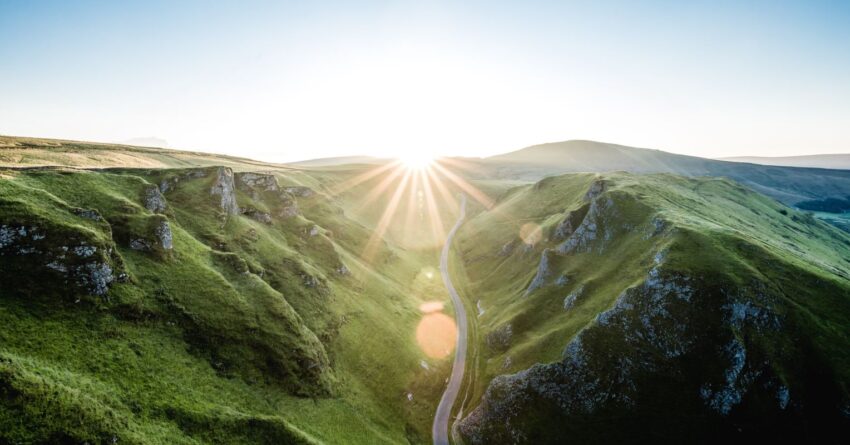
Source: Grant Ritchie/ Unsplash
One of the Kardashians took the lead in Google search trends this week, while climate change featured a dominant role in news headlines as heat waves persist into September.
My city (outside of Austin, Texas) has another heat advisory today with temperatures rising to 106 degrees Fahrenheit. We are also experiencing an ongoing drought coupled with water restrictions, so many trees have dried to a crisp.
Flashing red lighted signs on the roadside warn of serious wildfire threats. Meanwhile, news broadcasts relay information about the devastation of the Lahaina fires in Hawaii, flooding in Nevada that impacted Burning Man attendees, hurricane season, and the drying up of the Salt Lake in Utah to name some headlines.
Therefore, it is not surprising that many people are dealing with environmental anxiety (also known as “eco-anxiety”). Worse, some children are getting traumatized by overhearing news reports and adult conversations about global warming and the climate crisis.
I won’t debate if climate change is real or if it is a seasonal event impacted by El Nino and the sunstorm cycles. Instead, this message intends to provide some coping strategies for people who may be experiencing eco-anxiety.
People want to feel safe and threats to safety can spur fear and anxiety—especially for people who have a history of trauma and threats to safety, like abuse, war conditions, natural disasters, neglect, diseases and altered physical abilities, childhood maltreatment, discrimination, poverty, and not having a home. Some people are highly resilient and seem to easily handle a multitude of stressors, which does not mean they are superior or better than anyone.
Aaron Antonovsky studied the origins of health and developed the salutogenic model, which means “origins of health” versus the “origins of disease” pathogenesis model that shaped modern medicine. He found people were more resilient to stressors and disease when they had a higher sense of coherence (SOC), where they felt internally and externally supported.
They had higher levels of meaning, felt they could comprehend what was happening around them, and that they had some level of control (manageability). He did find that people with trauma and safety threats in their history tended to have a reduced SOC, which sheds light on the idea that a person cannot endure an infinite amount of stress.
Returning to eco-anxiety, it can feel frightening to imagine that the land under our feet is going to betray us. This is where it becomes essential to monitor the news input. It helps to remember that the adage in media is, “If it bleeds, it leads.”
While news can move people to action, like helping people in Lahaina, it can also be detrimental to one’s health if they constantly feed off it and have their phone buzzing with a steady stream of alarming updates. Read some news and then take a vacation from it.
Moreover, you may need to feed yourself at least five positive pieces of news or ideas for every negative news item. This is the formula John Gottman developed for interactions with couples, yet it also translates to internal self-talk and external communication.
Speaking of internal self-talk, what are you telling yourself when you hear the news headlines or look at the environment around you? Does your inner dialogue sound like Chicken Little screaming, “The sky is falling! The sky is falling!”
If so, how about a reframe? Find some ways to reframe the situation to yourself like you would do with your child. For instance, you might want to say, “Everything is OK. Mother Earth might have a little fever right now, so let’s go out and help her feel better.”
My research in sacred healing and sacred places revealed that many people have created sacred places in their homes and surrounding yard areas; they felt healing from the earth, while simultaneously giving healing intentions to the earth. Some people have painted rocks with loving messages. Some meditate and pray outside.
Environment Essential Reads
Others have created an altar of special items that are symbols of love and healing, including plants and trees that may use less water and/or that survive certain weather events. Additionally, people found that connecting with others in their immediate community and around the world to give prayers and positive intentions for worldwide healing enhanced their SOC.
These are a few ideas and I encourage you to develop your list of things you can do that feels positive and reasonable (not overwhelming). Finally, I will close with a moving quote from Gandhi that might inspire you:
Prayer is not an old woman’s idle amusement. When properly understood and applied, it is the most potent form of action.
